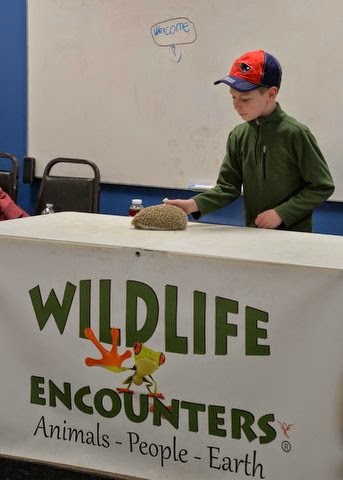The
Raymond RSU14 Withdrawal Committee revealed new school cost information and
accepted comments and questions Tuesday night on Raymond’s petition-initiated
proposal to separate from Windham schools. Several dozen residents, mostly from
Raymond, inquired about the effect on school programs, infrastructure and
school district finances during the 90-minute session.
Committee
chair Joe Bruno said the meeting’s sole purpose was to provide Raymond voters
with the facts and figures needed to decide whether the separation idea should
proceed. Given the recent resolution of the school funding formula between the
two towns, the issue is now scheduled for a June vote in Raymond.
Bruno
presented to the group cost estimates if Raymond remained or withdrew from the
RSU. Based on recent statistics and future projections, Bruno said the best
estimate of Raymond’s obligation to the district, if it were to stay in the
union, would be between 8.3 million and 8.7 million dollars. Withdrawing would
increase the amount to between $9.2 and $12 million, a net yearly increase to
taxpayers of between $200 and $650 on the school side of the budget. Committee
co-chair Teresa Sadak said she disagrees with those figures, but did not
elaborate. Additionally, legal and other expenses associated with a formal
withdrawal have cost other districts between $20,000 and $50,000. Raymond has
already budgeted just over $20,000 for a possible separation.
The
pros and cons of RSU withdrawal were also discussed. Proponents of separation
pointed to a higher degree of local control. “Three of nine is not much of a
voice,” commented one speaker during the public hearing, referring to the composition
of the district school board which has six elected representatives from
Windham, and three from Raymond, based on population.
Opponents
of separation point out the expanded infrastructure of a larger school
district, which can offer expanded and varied programs, such as courses and
additional sports options, as a plus. The ability to attract full-time teachers
rather than part time, such as half or 2/5 type positions is also a benefit.
Former
school board chairperson Katrina Sangster said the long range outlook for
Raymond is for a steady or lower student population which could force higher
per-pupil costs.
Windham
Primary School teacher Rebecca Cole said educational teams made up of teachers
from both towns “…don’t talk about kids from Raymond and kids from Windham,”
they discuss programs for all students, pointing out much of the district’s
collaborative work could be lost in a separation.
A
revised funding formula that divides the cost obligation of each town, as
recommended by the school board, was approved by a small number of voters
(fewer than 200) in March. It lowered Raymond’s local portion of the running of
the school district from 45 percent to 36 percent over three years, leaving
Windham to pick up more of the cost above what the state funds. The vote also
stipulated that the cost of any new school construction (or building additions)
would be borne by the town in which the school, or addition, was built.
Still
unknown, however, is whether the school board action helped to quell the concerns
of Raymond residents. The withdrawal committee wants guidance on the question
and has called for a vote at the Town’s June 9th general election.
Chairman Bruno says the yes or no ballot question will ask voters
whether the RSU withdrawal effort should continue or abandon its work.
Public
testimony at Tuesday’s hearing revealed little as to which way the community is
leaning. Bruno observed that many of the comments reflected citizens’ concerns
with the school board, not the withdrawal committee.














